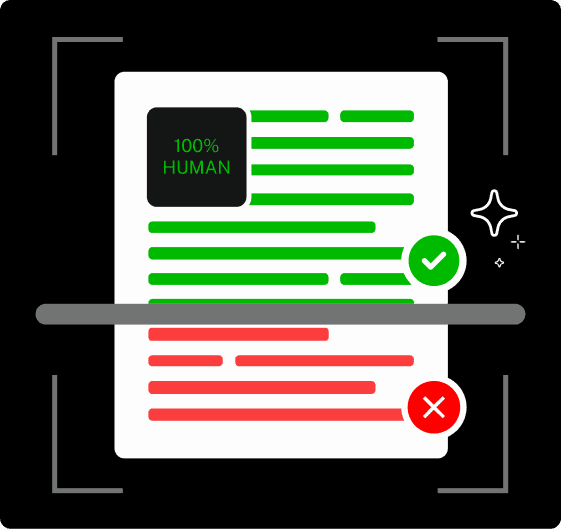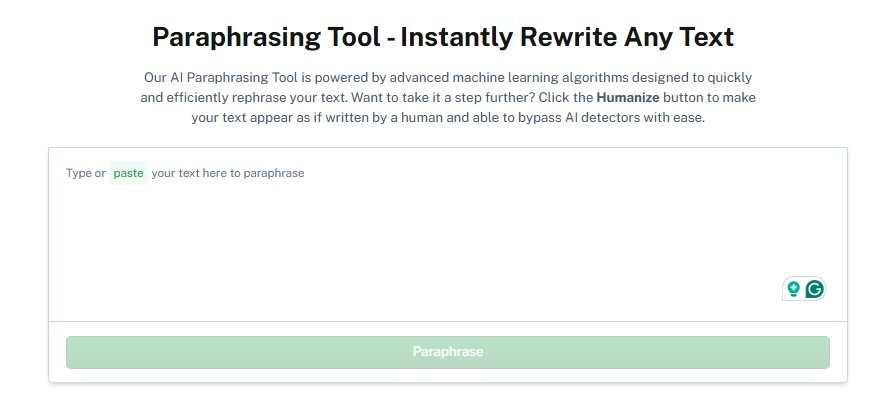The underrated heroes of modern English grammar are the connectors that hold our writing together without us even batting an eye.
From indirect objects that link verbs and subjects to essay bridges, these elements act as the glue that holds your ideas together.
Linking verbs, especially, don’t get the limelight they deserve.
They keep your sentences feeling whole and connect the subject to whatever comes next, hence the operative word, “linking.”
The “am, is, and are” trio (plus their past tense siblings: was and were) are some classic examples. And without linking verbs, English would fall apart faster than a sentence without a subject.
So, how do you identify these crucial elements? What makes them different from action verbs?
Here’s everything you need to know about linking verbs and how they function in your sentences.
What Is a Linking Verb?

Linking verbs are the quiet connectors of our language.
They don’t show action. Instead, they connect the subject of a sentence to additional information about that subject.
Think of them as bridges between ideas rather than actions performed.


Never Worry About AI Detecting Your Texts Again. Undetectable AI Can Help You:
- Make your AI assisted writing appear human-like.
- Bypass all major AI detection tools with just one click.
- Use AI safely and confidently in school and work.
The primary function of a linking verb is to link the subject to a subject complement.
This complement renames or describes the subject, telling us what it is or what it’s like. Unlike action verbs that tell us what the subject does, linking verbs tell us what the subject is.
For example, in the sentence “The cake tastes delicious,” the linking verb “tastes” connects the subject “cake” to the adjective “delicious,” which describes the cake.
Common Linking Verbs
The most common linking verbs fall into two main categories:
Forms of “to be”:
- Am
- Is
- Are
- Was
- Were
- Being
- Been
- Be
Sensory verbs (which can function as either linking or action verbs depending on context):
- Feel
- Look
- Smell
- Sound
- Taste
Verbs that indicate a state or condition:
- Appear
- Become
- Grow
- Remain
- Seem
- Stay
- Turn
While “to be” verbs almost always function as linking verbs, the sensory verbs and state/condition verbs can sometimes act as action verbs instead.
Context matters tremendously with these versatile verbs.
Examples of Linking Verbs in Sentences
Seeing linking verbs in action helps clarify their role.
Let’s look at some examples across different categories:
Forms of “to be”:
- She is a talented musician. (Connects “she” to “musician”)
- They were exhausted after the marathon. (Connects “they” to “exhausted”)
- I am your new neighbor. (Connects “I” to “neighbor”)
Sensory verbs as linking verbs:
- The soup tastes salty. (Describes the soup’s flavor)
- You look tired today. (Describes your appearance)
- This fabric feels soft. (Describes the fabric’s texture)
State or condition verbs:
- The situation became dangerous. (indicates a change in the situation)
- She seemed upset by the news. (describes her apparent state)
- The crowd grew restless during the delay. (describes a changing condition)
Notice how in each example, the linking verb connects the subject to information that renames or describes it.
The verb itself doesn’t show action but simply establishes a relationship between the subject and its complement.
Interestingly, forms of the verb “to be” (such as “is,” “are,” “was,” and “were”) are among the most frequently used words in the English language, underscoring the fundamental role linking verbs play in everyday communication.
Linking Verbs vs Action Verbs

The distinction between linking and action verbs is fundamental to understanding English sentence structure.
The difference lies in what the verb communicates about the subject.
Action verbs tell us what the subject does:
- She runs five miles every morning.
- The cat chased the mouse.
- They built a sandcastle on the beach.
Linking verbs tell us what the subject is or is like:
- She is a marathon runner.
- The cat appears content.
- They remain dedicated to their project.
The same verb can function differently depending on context. Take these examples with “look”:
- She looked at the painting. (Action verb – she performed the action of looking)
- She looked tired. (Linking verb – connects “she” to her state of being “tired”)
A good test: If you can replace the verb with “is” or “are” and the sentence still makes sense, you’re dealing with a linking verb. If not, it’s an action verb.
Subject Complements: Predicate Nouns vs Adjectives
When linking verbs connect subjects to complements, those complements come in two main forms: predicate nouns (also called predicate nominatives) and predicate adjectives.
Predicate Nouns rename the subject:
- Mark is the captain. (“Captain” is a predicate noun renaming Mark)
- She became my mentor. (“Mentor” is a predicate noun)
- The problem remains their attitude. (“Attitude” is a predicate noun)
Predicate Adjectives describe the subject:
- The coffee tastes bitter. (“Bitter” is a predicate adjective describing coffee)
- The children seem happy. (“happy” is a predicate adjective)
- The sky turned dark. (“Dark” is a predicate adjective)
Understanding the complement type helps clarify the relationship being established by the linking verb.
Is it identifying what the subject is (noun) or describing what it’s like (adjective)?
How to Identify Linking Verbs in Writing
Spotting linking verbs in sentences isn’t always straightforward.
Here are practical strategies to help you identify them:
- Apply the “is” test: Try substituting a form of “to be” for the verb. If the sentence retains essentially the same meaning, you’ve found a linking verb.
- Original: She looks happy.
- Test: She is happy. (Makes sense, so “looks” is functioning as a linking verb)
- Check what follows the verb: Linking verbs are typically followed by nouns, pronouns, or adjectives that describe or rename the subject, not by adverbs.
- Identify the relationship: Ask yourself if the verb shows action or establishes a state of being. Action verbs show the subject doing something, while linking verbs connect the subject to information about it.
- Look for sensory context: When verbs like “feel,” “taste,” “smell,” “sound,” and “look” are used to describe sensory experiences rather than actions, they’re functioning as linking verbs.
- Watch for complements: If a word after the verb describes or renames the subject (rather than receiving the action), the verb is likely linking.
Practice makes perfect with this skill. The more you analyze sentences, the more instinctive identifying linking verbs becomes.

If you’re unsure whether a verb is linking or not, the Undetectable AI Paraphrasing tool can help by rewording the sentence while preserving its structure, making it easier to spot whether the verb connects the subject to a description or performs an action.
Common Mistakes with Linking Verbs
Even experienced writers sometimes have trouble with linking verbs.
Here are common pitfalls to avoid:
Confusing linking verbs with helping verbs:
- Linking verb: She is talented. (connects subject to description)
- Helping verb: She is singing. (“is” helps the main verb “singing”)
Using an adjective where an adverb is needed:
- Incorrect: He smells bad. (If we mean his sense of smell is poor)
- Correct: He smells badly. (For impaired sense of smell)
- Correct: He smells bad. (If we mean he emits an unpleasant odor – here “smells” is a linking verb)
Misidentifying verb function:
- “The detective looked suspicious.” (Is the detective suspicious, or is he looking at something in a suspicious manner? Context matters!)
Subject-complement agreement issues:
- Incorrect: The problem are the faulty parts.
- Correct: The problem is the faulty parts.
Overusing “to be” verbs: While not grammatically wrong, relying too heavily on forms of “to be” can create dull writing. Sometimes converting to action verbs creates more dynamic sentences:
- Weak: She is beautiful.
- Stronger: Her beauty captivates everyone in the room.
Being aware of these common errors helps you use linking verbs more effectively and precisely in your writing.
Many writers (especially in academic contexts) mistake linking verbs for action verbs or misuse them in constructions that require a clear subject complement.
These issues often appear in drafts where verb choice affects clarity and coherence.
A strong grasp of the distinction between verbs and verb phrases allows for more accurate expression of ideas.
It also minimizes the risk of falling into frequent grammatical errors in academic writing, where improper verb use can subtly weaken the credibility of an argument.
Practice: Spot the Linking Verbs
Testing your understanding reinforces learning.
Try identifying the linking verbs in these sentences:
- The movie was entertaining from start to finish.
- The flowers smell wonderful in spring.
- She became the company’s CEO last year.
- The children grew restless during the long ceremony.
- That solution seems appropriate for our problem.
- Your explanation sounds reasonable to me.
- The milk in the refrigerator smells sour.
- Despite the criticism, he remained confident.
- After the accident, she appeared unharmed.
- The sky turned orange at sunset.
(Answers: 1. was, 2. smell, 3. became, 4. grew, 5. seems, 6. sounds, 7. smells, 8. remained, 9. appeared, 10. turned)
Challenging yourself with exercises like this improves your grammar awareness and writing precision.
Try creating your own examples to further strengthen your understanding.
Take a moment to explore our AI Detector and Humanizer in the widget below!
FAQs About Linking Verbs
Can a verb be both action and linking?
Yes. Verbs like feel, look, and sound can act as either, depending on context.
Is “have” a linking verb?
Rarely. “Have” usually shows possession or helps other verbs.
Are all “to be” verbs linking verbs?
Not always. Am, is, are, was, were, etc., act as linking verbs when alone, but become auxiliaries when paired.
Linking It All Together
Linking verbs may seem small, but they carry significant weight in our language.
They quietly establish relationships between subjects and their characteristics or identities, allowing us to define, describe, and clarify without excessive wording.
Mastering linking verbs enhances both your grammatical knowledge and your writing quality.
When you understand how these connectors function, you gain more control over your sentences’ structure and meaning.
You can choose when to employ linking verbs for clear description and when to convert to action verbs for more dynamic expression.
If you’re ever unsure whether a verb is a linking one or if your sentence reads the way you intended, Undetectable AI tools can offer instant feedback and subtle corrections that help tighten your phrasing without losing your voice.
Like many aspects of grammar, linking verbs reveal the elegant architecture of language.
They remind us that communication isn’t just about what we say but how we connect ideas together.
The next time you write “She is brilliant” or “The cake tastes delicious,” appreciate the subtle linking verb doing its essential connecting work.
